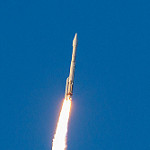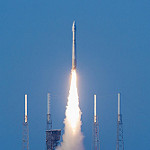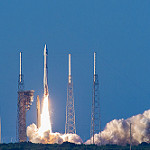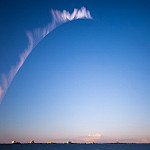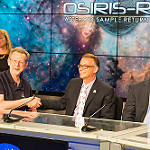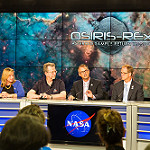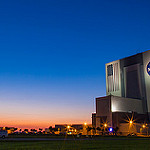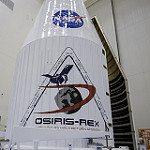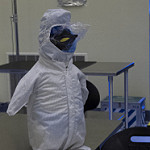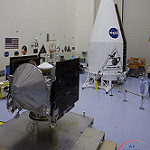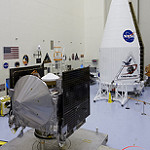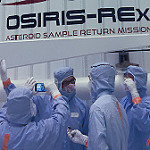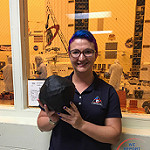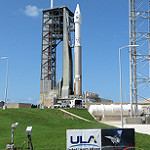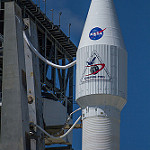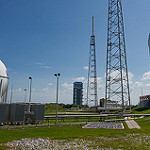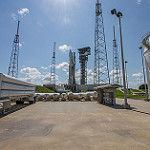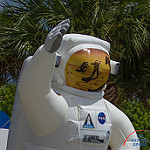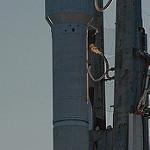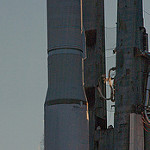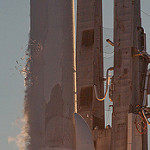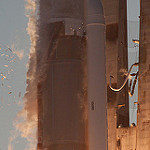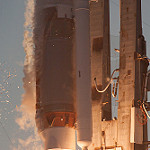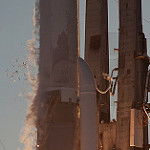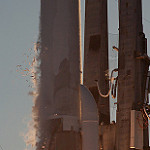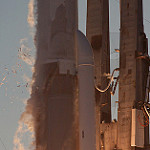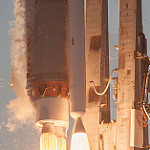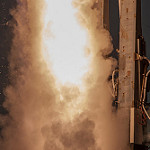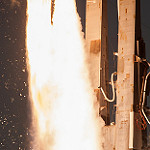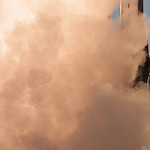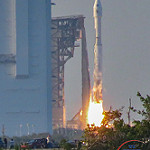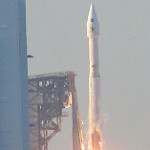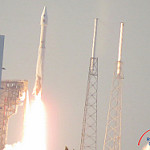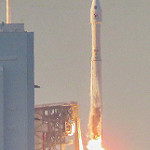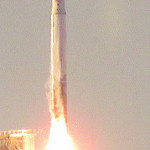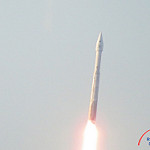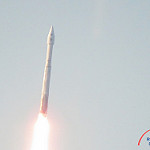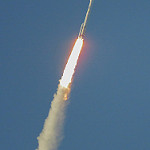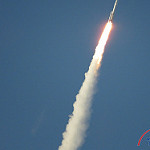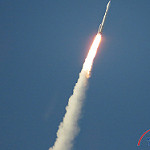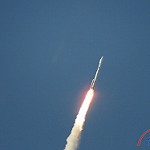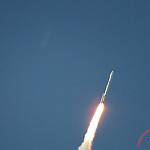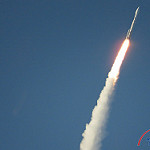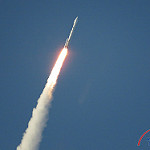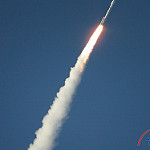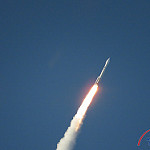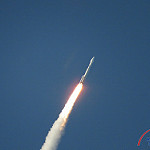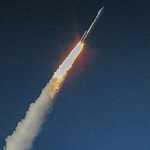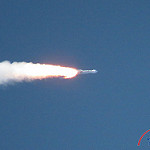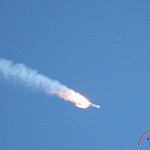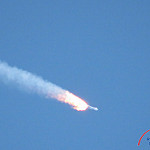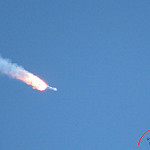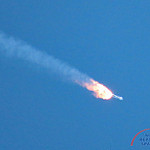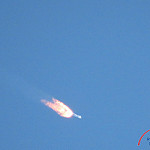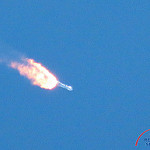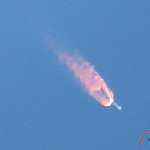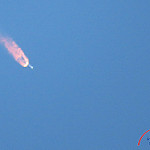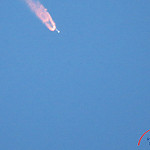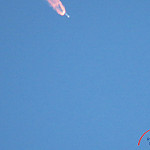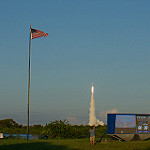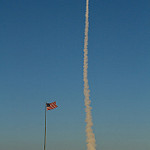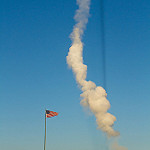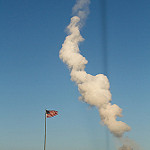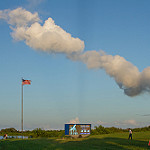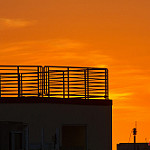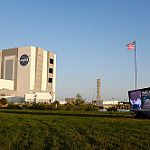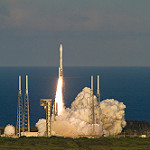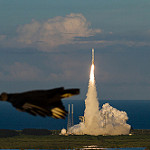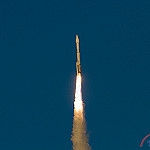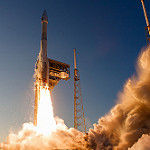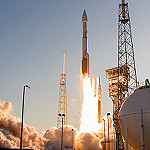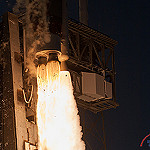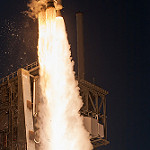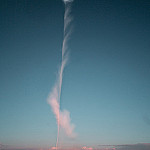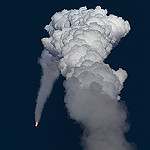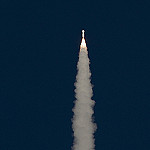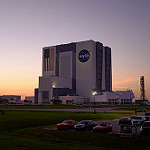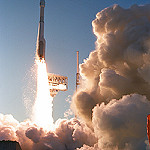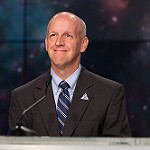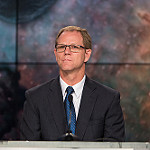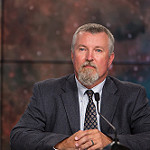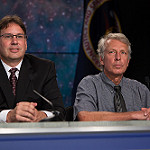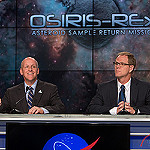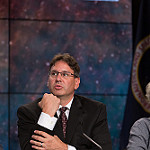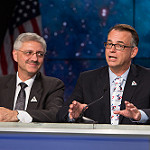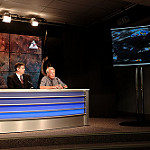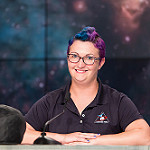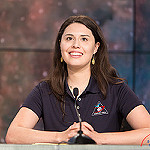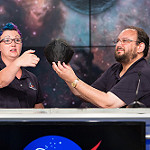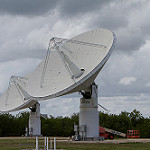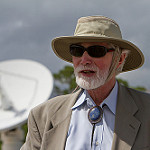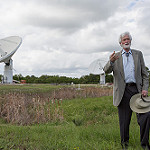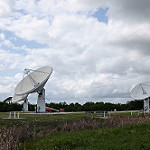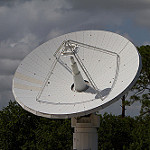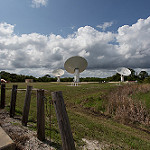Sampling Success: OSIRIS-REx Successfully Gathers Bennu Regolith for Asteroid Sample Return
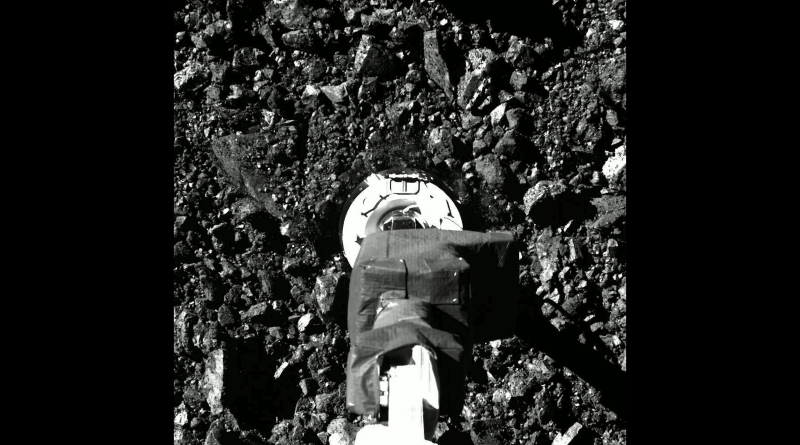
Based on photographic evidence, the OSIRIS-REx team believes they have successfully collected enough of the rocky surface of Asteroid Bennu. Launched in September 2016, the spacecraft was designed to collect anywhere from 60 grams to 2 kilograms of Bennu. Although the spacecraft has enough nitrogen gas to try three touch-and-go maneuvers, the mission's stated goal was to return once they had collected 60 grams or more.
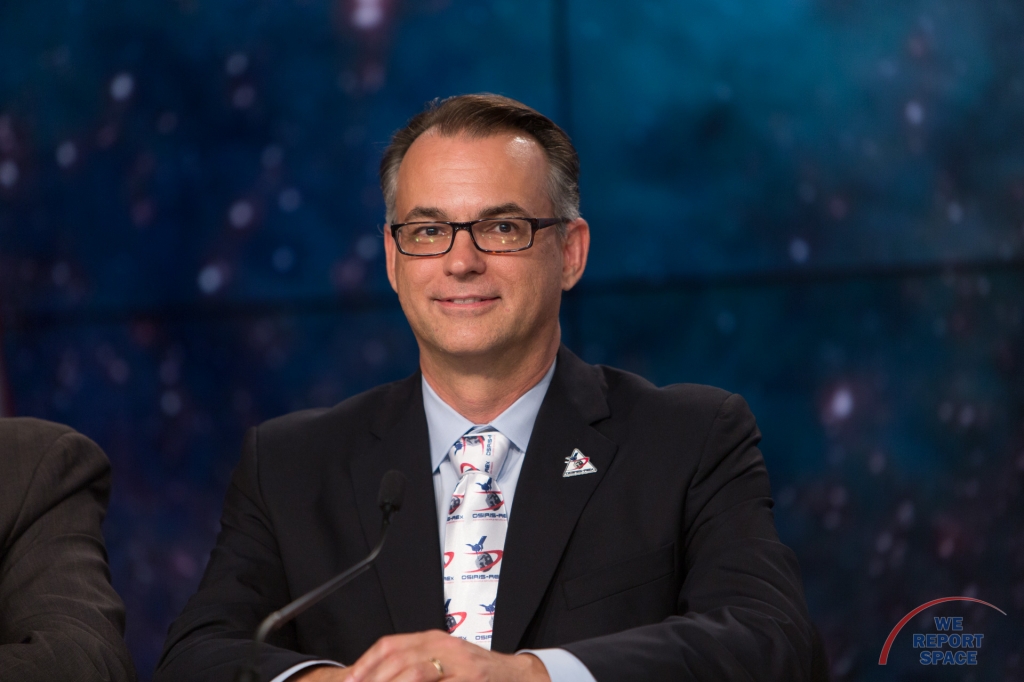
Principal Investigator Dante Lauretta: "A lot of us were up really late last night. Finally at 2AM in Denver, we received the money shot photograph. I must have watched it about 100 times last night before I got some shut eye. Then I dreamed of an array of Bennu regolith floating around me."
"When the TAGSAM head contacted a 20-cm rock, it crushed the rock. We are estimating a 2 cm penetration into the surface of Bennu. After the nitrogen gas was released, debris flew everywhere which points to very successful collection of regolith."
"The OSIRIS-REx team outperformed our expectations in every way", according to NASA Adminstrator Jim Bridenstine.
"Many generations of researchers will be able to pursue discoveries from this sample," said Thomas Zurbuchen, associate administrator, Science Mission Directorate, NASA Headquarters, Washington.
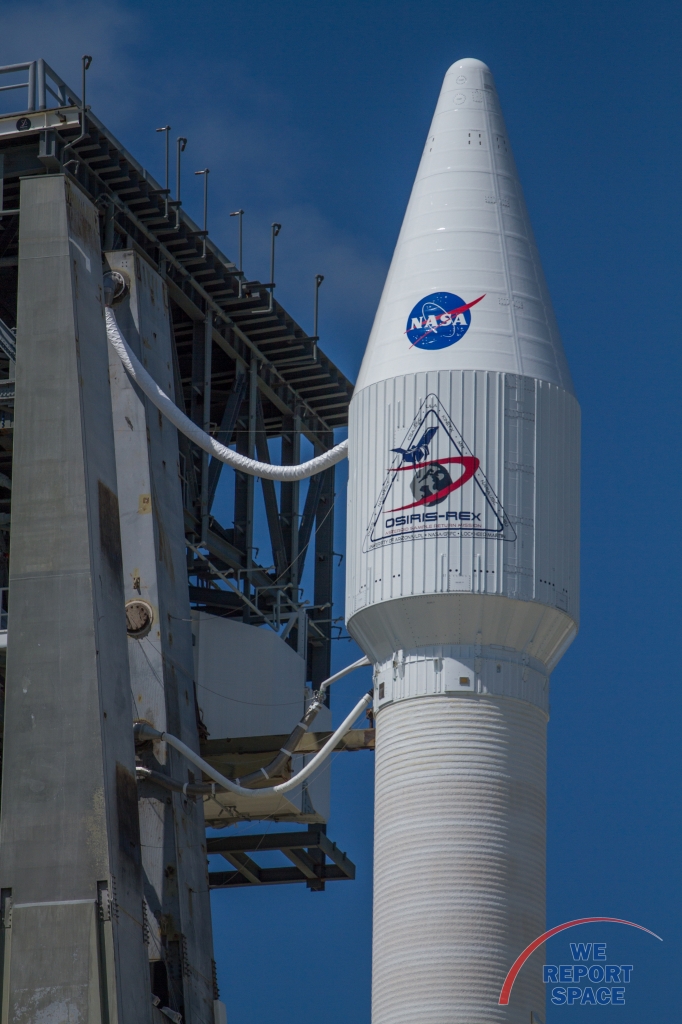
"We are 320 Million kilometers from Earth and we touched down to within a meter of where we expected to." Rich Burns, OSIRIS-REx project manager, NASA’s Goddard Space Flight Center in Greenbelt, Maryland.
In an August 2016 press event, principal investigator Dante Lauretta explained: "The OSIRIS-REx policy is one successful sampling attempt. The mission requirement is 60 grams or two ounces of material. I am pretty sure if we get that successful sample, we are done. Get it in that sample return capsule and then come home. You would not do anything to risk that material."
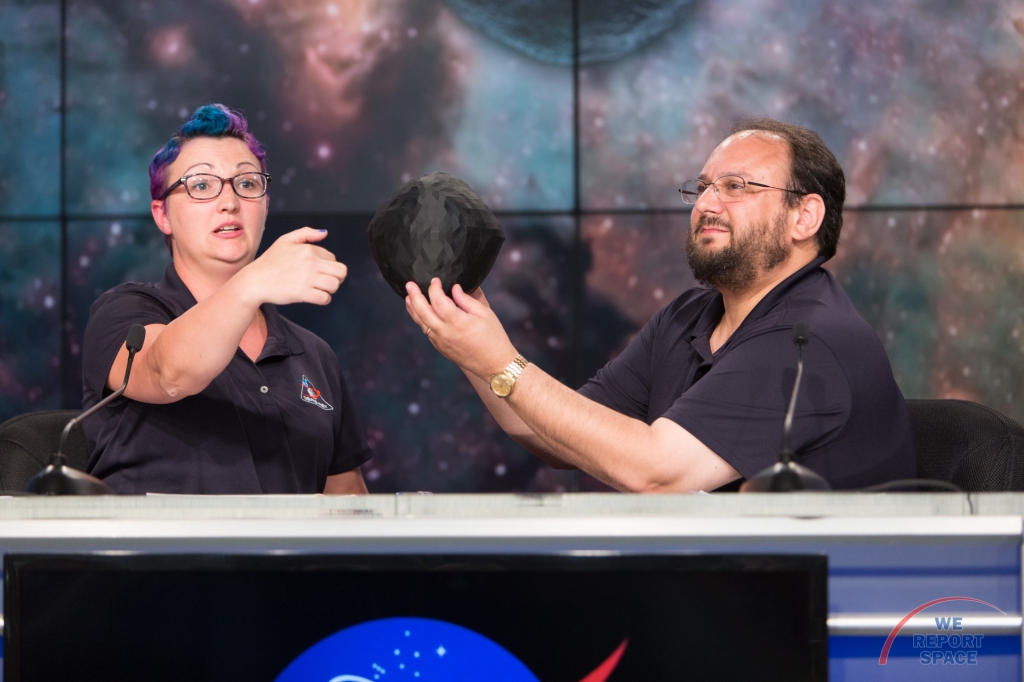
Deputy principal investigator Heather Enos at the same event in 2016: "OSIRIS-REx's requirement is 60 grams. We can collect up to 2 kilograms. 2 ounces may seem like a small sample, but analytical tools at laboratories require a very small amount of material. So, I would say, because we are so careful at the distribution, you can do a lot with 2 ounces."
However, as the excitement of the impending touch-and-go maneuver approached, on 10/19/2020, Heather Enos was asked for her wildest dreams of success. She replied: "What would be the perfect sample that we could collect? I have had some wild dreams. The best outcome would be that we would collect a massive sample. We say we have a requirement of 60 grams or two ounces. But we have the capability of collecting up to two kilograms. I would love for that capsule to be completely full. In terms of its composition, we want something that represents Bennu's signatures of carbon-rich and hydrated minerals. That would be amazing and I have every reason to believe that that is going to be in that sample. In terms of size and distribution, I would hope that we have a couple of different size and distribution. I would love tiny grains. I would love a couple that are at the maximum of 2 cm that we could ingest. Diversity is the key to being able to get the most out of that sample."
“This was an incredible feat – and today we’ve advanced both science and engineering and our prospects for future missions to study these mysterious ancient storytellers of the solar system,” said Thomas Zurbuchen, associate administrator for NASA’s Science Mission Directorate at the agency’s headquarters in Washington. “A piece of primordial rock that has witnessed our solar system’s entire history may now be ready to come home for generations of scientific discovery, and we can’t wait to see what comes next.”
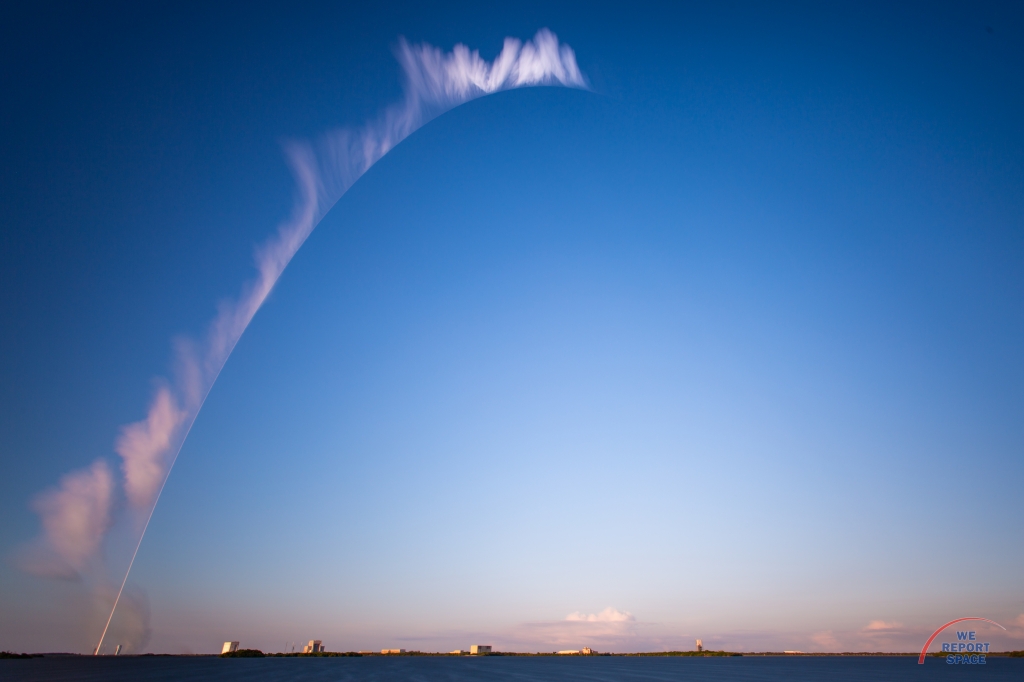
OSIRIS-REx engineers and scientists will use several techniques to identify and measure the sample remotely. First, they’ll compare images of the Nightingale site before and after TAG to see how much surface material moved around in response to the burst of gas.
Next, the team will try to determine the amount of sample collected. One method involves taking pictures of the TAGSAM head with a camera known as SamCam, which is devoted to documenting the sample-collection process and determining whether dust and rocks made it into the collector head. One indirect indication will be the amount of dust found around the sample collector head. OSIRIS-REx engineers also will attempt to snap photos that could, given the right lighting conditions, show the inside of the head so engineers can look for evidence of sample inside of it.
A couple of days after the SamCam images are analyzed, the spacecraft will attempt yet another method to measure the mass of the sample collected by determining the change in the spacecraft’s “moment of inertia,” a phrase that describes how mass is distributed and how it affects the rotation of the body around a central axis. This maneuver entails extending the TAGSAM arm out to the side of the spacecraft and slowly spinning the spacecraft about an axis perpendicular to the arm. This technique is analogous to a person spinning with one arm extended while holding a string with a ball attached to the end. The person can sense the mass of the ball by the tension in the string. Having performed this maneuver before TAG, and now after, engineers can measure the change in the mass of the collection head as a result of the sample inside.
“We will use the combination of data from TAG and the post-TAG images and mass measurement to assess our confidence that we have collected at least 60 grams of sample,” said Rich Burns, OSIRIS-REx project manager at Goddard. “If our confidence is high, we'll make the decision to stow the sample on October 30.”
Photos

Stunning, full color photo book covering every east coast launch spanning 2014-2015, including the first-ever powered landing of a SpaceX Falcon 9 rocket.
More Info